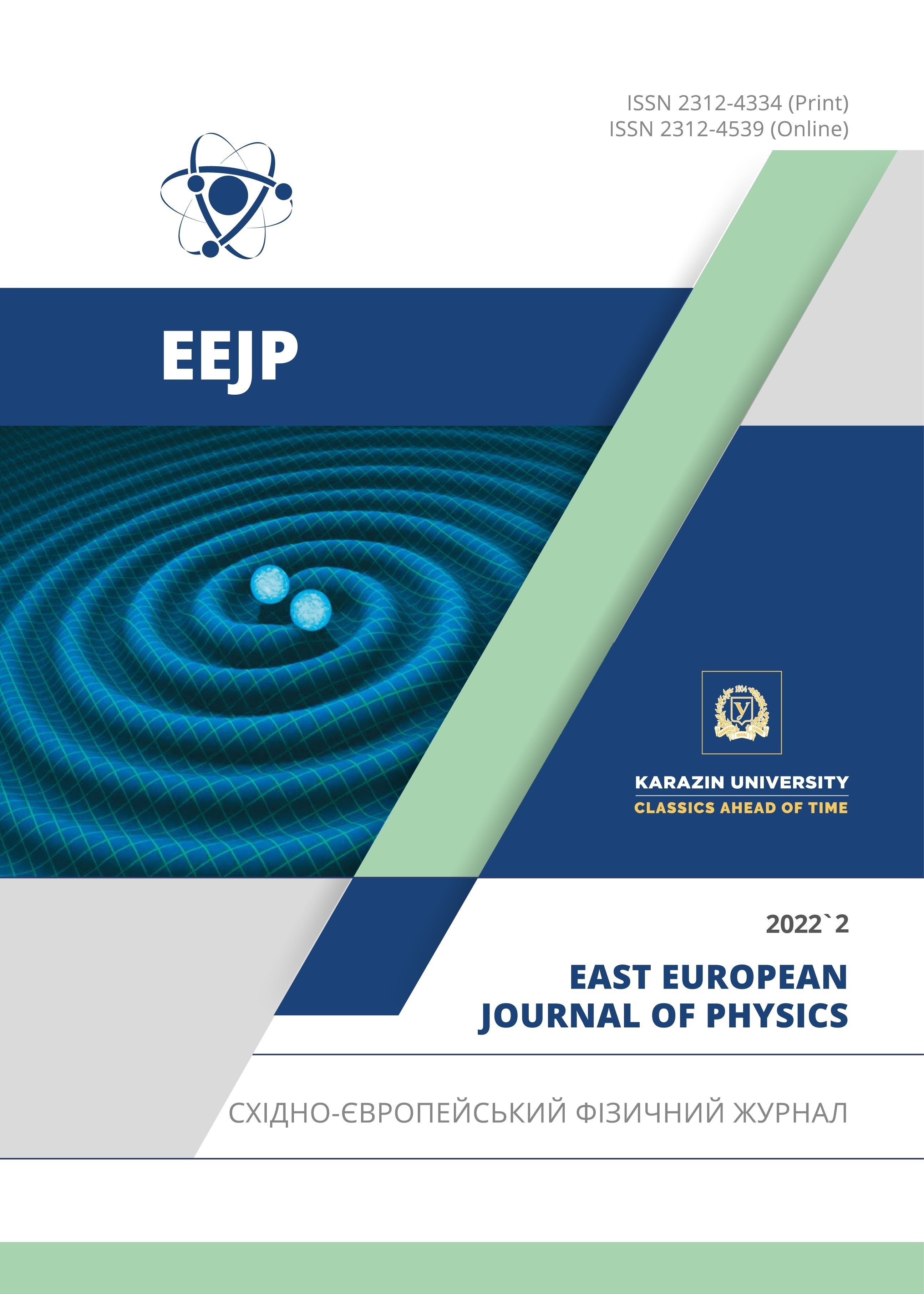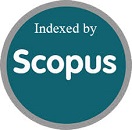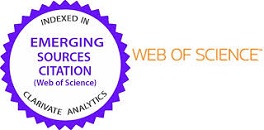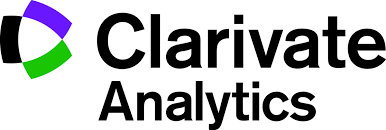Comparison of Numerically Simulated and Measured Dose Rates for Gamma-Irradiation Facility
Abstract
The article provides a description of steps which were made to make comparison between numerically simulated and measured dose rates in Izotop gamma-irradiation facility (Budapest, Hungary) Numerical simulation was carried out with the help of software toolkit GEANT4. Dose measurement were made by ethanol-chlorobenzene (ECB) dosimeters. The comparison shows a good agreement between simulated and measured values. Worst accuracy was 17.08%.
Downloads
References
} B. P. Fairand, Radiation Sterilization for Health Care Products: X-Ray, Gamma, and Electron Beam (CRC Press, Boca Raton, Apr. 2014),https://doi.org/10.1201/9781482286205.
S. N. Hajare, Radiation technology for preservation and hygienization of food and agricultural commodities, INIS Reference Number: 48066274 (Sinhgad Institutes, India, 2017).
A. G. Chmielewski, en, Radiation Physics and Chemistry, Proceedings of the 11th Tihany Symposium on Radiation Chemistry 76, 1480–1484 (2007), https://doi.org/10.1016/j.radphyschem.2007.02.056.
S. I. Borrely, A. C. Cruz, N. L. Del Mastro, M. H. O. Sampa, and E. S. Somessari, en, Progress in Nuclear Energy, Reviews from the X ENFIR/III ENAN Brazilian Joint Nuclear Conference 33, 3–21 (1998), https://doi.org/10.1016/S0149-1970(97)87287-3.
M. R. Cleland, L. A. Parks, and S. Cheng, en, Nuclear Instruments and Methods in Physics Research Section B: Beam Interactions with Materials and Atoms, Ionizing Radiation and Polymers 208, 66–73 (2003), https://doi.org/10.1016/S0168-583X(03)00655-4.
L. Cortella, C. Albino, Q.-K. Tran, and K. Froment, en, Radiation Physics and Chemistry 171, 108726 (2020), https://doi.org/10.1016/j.radphyschem.2020.108726.
P. Andreo, D. T. Burns, A. E. Nahum, J. Seuntjens, and F. H. Attix, Fundamentals of Ionizing Radiation Dosimetry, en (John Wiley & Sons, Aug. 2017).
S. Agostinelli, J. Allison, K. Amako, J. Apostolakis, H. Araujo, P. Arce, M. Asai, and et al, en, Nuclear Instruments and Methods in Physics Research Section A: Accelerators, Spectrometers, Detectors and Associated Equipment 506, 250–303 (2003), https://doi.org/10.1016/S0168-9002(03)01368-8.
J. Allison, K. Amako, J. Apostolakis, H. Araujo, P. Arce Dubois, M. Asai, G. Barrand, and et al, IEEE Transactions on Nuclear Science 53, 270–278 (2006), https://doi.org/10.1109/TNS.2006.869826.
J. Allison, K. Amako, J. Apostolakis, P. Arce, M. Asai, T. Aso, E. Bagli, and et al, en, Nuclear Instruments and Methods in Physics Research Section A: Accelerators, Spectrometers, Detectors and Associated Equipment 835, 186–225 (2016), https://doi.org/10.1016/j.nima.2016.06.125.
Institute of Isotopes Ltd., Budapest, Gamma irradiation facility, https://www.iki.kfki.hu/radsec/irradfac/pub/Gamma_Irradiation_Facility.pdf (visited on 04/20/2022).
International Organization for Standardization, ISO/ASTM 51538:2009 Practice for use of the ethanol-chlorobenzene dosimetry system, Standard (International Organization for Standardization, Geneva, CH, Feb. 2009).
A. Kovacs, V. Stenger, G. Foeldiak, and L. Legeza, in High-dose dosimetry (1985).
A. Kov´acs, I. Slezsak, W. L. McLaughlin, and A. Miller, Radiation Physics and Chemistry 46, 1211–1215 (1995).
Copyright (c) 2022 Volodymyr Morgunov, Imre Madar, Serhii Lytovchenko, Volodymyr Chyshkala, Bohdan Mazilin

This work is licensed under a Creative Commons Attribution 4.0 International License.
Authors who publish with this journal agree to the following terms:
- Authors retain copyright and grant the journal right of first publication with the work simultaneously licensed under a Creative Commons Attribution License that allows others to share the work with an acknowledgment of the work's authorship and initial publication in this journal.
- Authors are able to enter into separate, additional contractual arrangements for the non-exclusive distribution of the journal's published version of the work (e.g., post it to an institutional repository or publish it in a book), with an acknowledgment of its initial publication in this journal.
- Authors are permitted and encouraged to post their work online (e.g., in institutional repositories or on their website) prior to and during the submission process, as it can lead to productive exchanges, as well as earlier and greater citation of published work (See The Effect of Open Access).








